The Mount Kailash pilgrimage offers a unique opportunity for spiritual seekers to embark on a transformative journey. Spanning 10 days, this immersive experience combines breathtaking landscapes with rich culture, culminating in a challenging 3-day circumambulation around one of the world’s most sacred mountains. As participants traverse the rugged terrain and cross the Dolma-La Pass, they’ll connect deeply with their spirituality, witnessing the serene beauty of Lake Manasarovar while overcoming physical challenges that forge lasting memories of reverence and tranquility. For those ready to embark on a truly remarkable pilgrimage, the details about this life-changing experience await.
Good To Know

-
The Mount Kailash pilgrimage is a significant spiritual journey for Hindus, Buddhists, Jains, and Bonpos, lasting 10 days with a three-day circumambulation around the holy mountain.
-
The pilgrimage includes a scenic drive to Saga, the first sight of Mount Kailash at Lake Manasarovar, and trekking through the challenging Dolma-La Pass (5600m).
-
The package includes essential costs such as transportation, accommodation, permits, and trekking equipment, while excluding international flights and personal expenses.
-
The pilgrimage is not suitable for children under 10, wheelchair users, or individuals with a history of altitude sickness, with restrictions on certain items to ensure a respectful experience.
-
The pilgrimage offers memorable experiences, such as witnessing sunrises over Mount Kailash, engaging in circumambulation rituals, and overcoming the challenges of the Dolma-La Pass.
Overview of the Pilgrimage
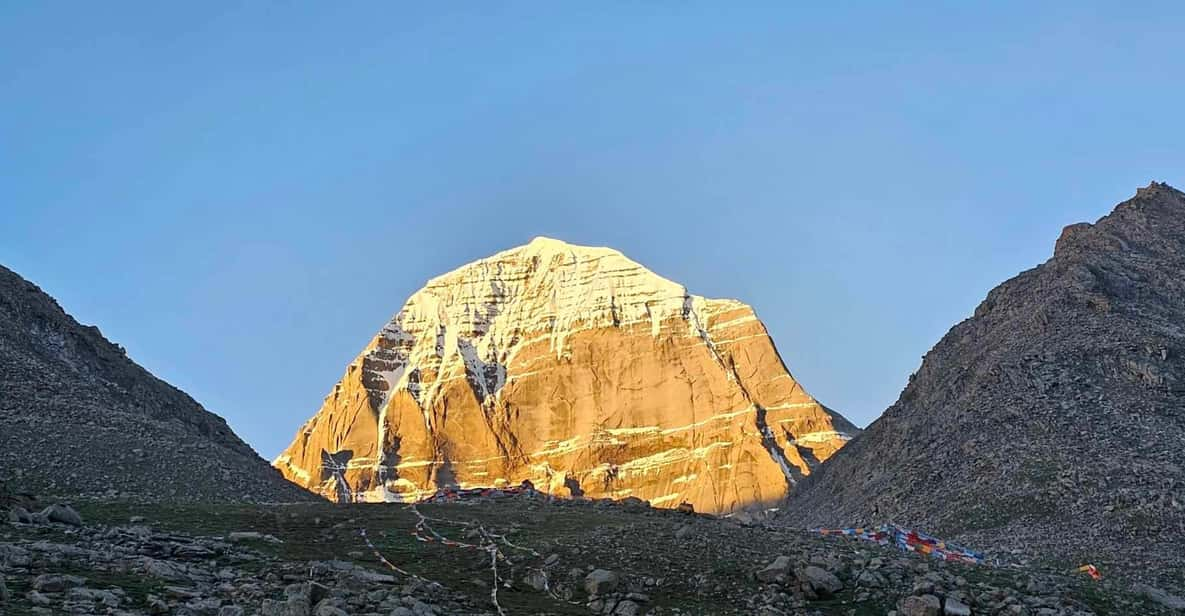
The Mount Kailash pilgrimage is a revered spiritual journey for Hindus, Buddhists, Jains, and Bonpos alike. It takes place over 10 days and costs from $4,999 per person.
The challenging terrain and sacred significance of Mount Kailash make this an unforgettable experience. The pilgrimage includes a 3-day circumambulation, or Kora, around the holy mountain.
Trekkers will witness the first sight of the iconic peak, known as the "Throne of the Gods", at Lake Manasarovar.
This pilgrimage isn’t suitable for children under 10, wheelchair users, or those prone to altitude sickness.
You can also read our reviews of more tours and experiences in Tibet.
Itinerary Highlights
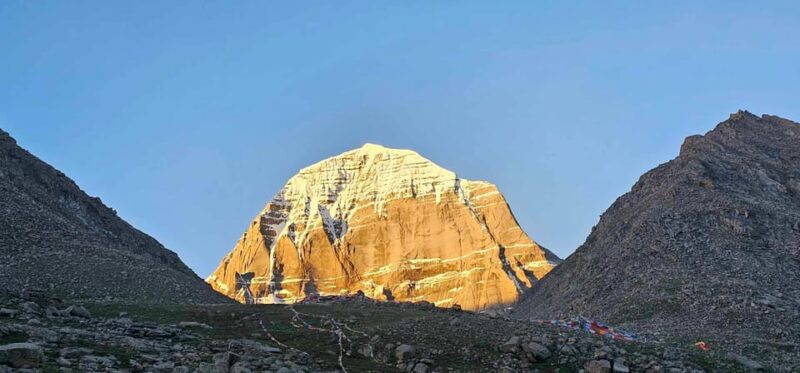
The 10-day itinerary for the Mount Kailash pilgrimage offers a captivating journey through diverse landscapes and sacred sites.
Highlights include:
-
Crossing the Nepal-China border and exploring the scenic drive to Saga (4450m).
-
Catching the first sight of the Holy Mount Kailash upon reaching Manasarovar (4558m).
-
Trekking through the challenging Dolma-La Pass (5600m) during the 3-day Kora circumambulation.
-
Visiting the base camp at Darchen (4975ft) before embarking on the iconic Kailash Parikrama.
The itinerary is designed to immerse participants in the spiritual essence of this revered destination while navigating the rugged terrain with the support of experienced guides.
Cost Inclusions and Exclusions
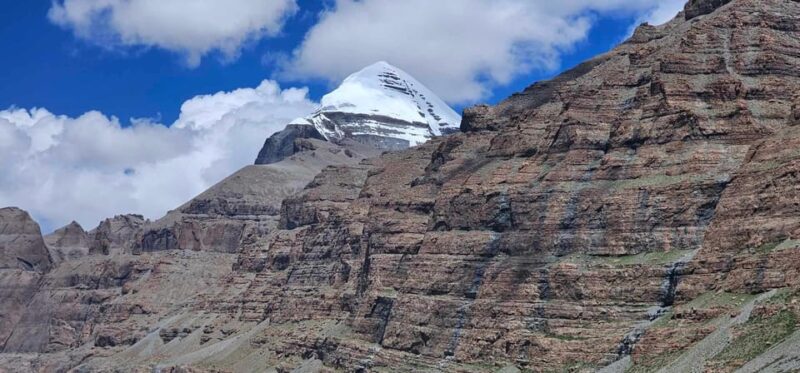
One key aspect of the Mount Kailash pilgrimage is the comprehensive list of inclusions and exclusions that define the tour package cost. The package includes transportation to the Nepal-China border, accommodation, permits, meals during the Kailash trek, and necessary trekking equipment. However, it excludes international flights, extra nights, rescue/evacuation costs, and personal porters or horses. The inclusions and exclusions are as follows:
| Inclusions | Exclusions |
|---|---|
| Transportation | International flights |
| Accommodation | Extra nights |
| Permits | Rescue/evacuation costs |
| Meals during trek | Personal porters or horses |
| Trekking equipment |
This detailed breakdown ensures travelers are aware of the costs involved in undertaking this sacred and challenging pilgrimage.
Suitability and Restrictions
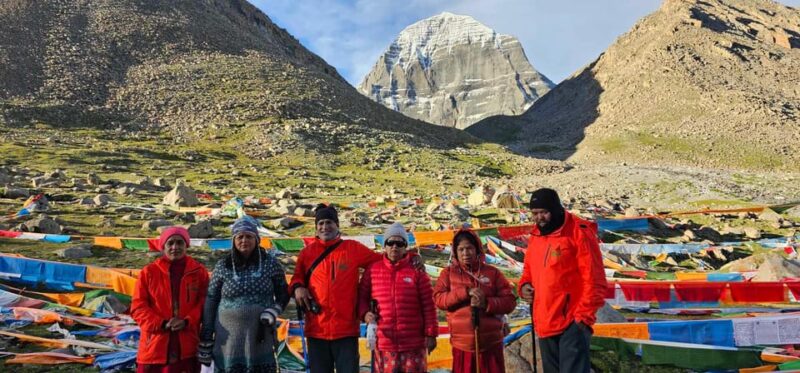
Given the challenging terrain and high-altitude nature of the Mount Kailash pilgrimage, the tour isn’t suitable for certain groups.
This includes:
- Children under 10 years, as they may struggle with the physical demands.
- Wheelchair users, as the trek involves steep and uneven paths.
- People with a history of altitude sickness, who may face severe health risks.
- Babies under 1 year, as the environmental conditions could be detrimental to their well-being.
The tour also prohibits the use of drones, alcohol, drugs, and military-style clothing, ensuring a respectful and harmonious experience for all participants.
More Great Tours NearbyPacking and Prohibited Items
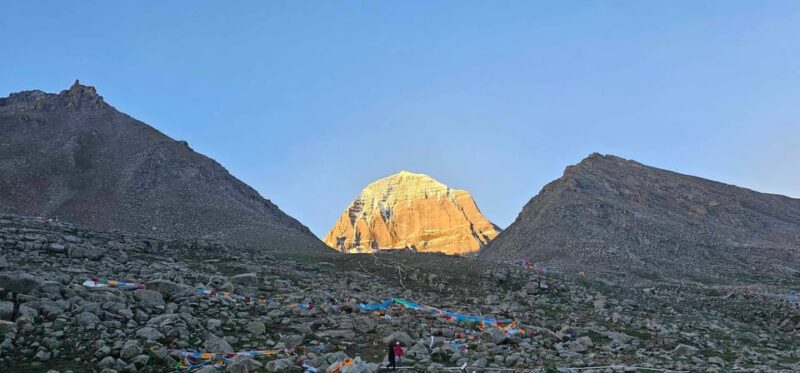
Hikers should pack comfortable shoes, clothes, gloves, and sufficient cash for the Mount Kailash pilgrimage. A camera, flashlight, daypack, goggles, and a first aid kit are also essential.
Face masks or protective coverings should be brought as well. However, certain items are prohibited on the trek, such as drones, drinks and food in the vehicle, and alcohol and drugs.
Likewise, military-style clothing isn’t allowed. The trek’s rugged terrain and spiritual significance require careful planning and preparation to ensure a safe and meaningful journey.
Terrain and Spiritual Significance
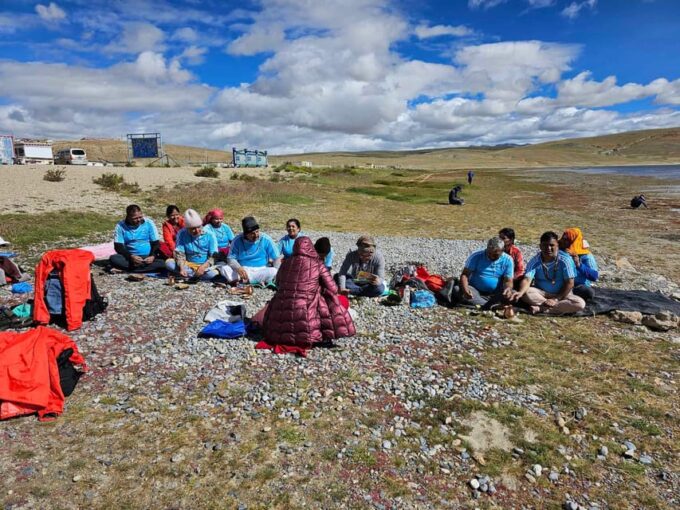
The terrain traversed during the Mount Kailash pilgrimage is challenging, with rugged paths and steep inclines that test the endurance of even the most seasoned trekkers.
This sacred site holds immense spiritual significance for Hindus, Buddhists, Jains, and Bonpos alike.
The pilgrimage includes:
-
A 3-day circumambulation (Kora) around the majestic Mount Kailash, considered the physical manifestation of the cosmic mountain.
-
Visits to the serene Manasarovar Lake, believed to be the source of four major rivers and a place of spiritual purification.
-
Crossing the Dolma-La Pass, a high-altitude crossing that demands mental and physical fortitude.
-
Experiencing the profound sense of connection to the divine that permeates this otherworldly landscape.
Preparation and Safety Measures
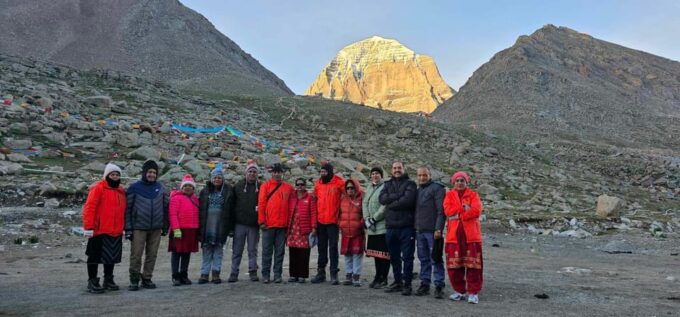
Embarking on the Mount Kailash pilgrimage requires thorough preparation and adherence to safety measures.
The trek’s challenging terrain and high altitudes necessitate proper gear and physical fitness. Participants must bring warm clothing, sturdy shoes, and essential medical supplies. Acclimatization is crucial to prevent altitude sickness.
The tour operator provides necessary equipment, including trekking gear and oxygen tanks, but personal items like yaks, porters, or horses must be arranged separately. Restrictions prohibit drones, alcohol, and certain types of clothing.
Travelers should also be mindful of their limitations – the pilgrimage isn’t suitable for young children, the elderly, or those with mobility issues.
Careful planning and responsible conduct ensure a safe, meaningful journey.
Memorable Experiences and Memories
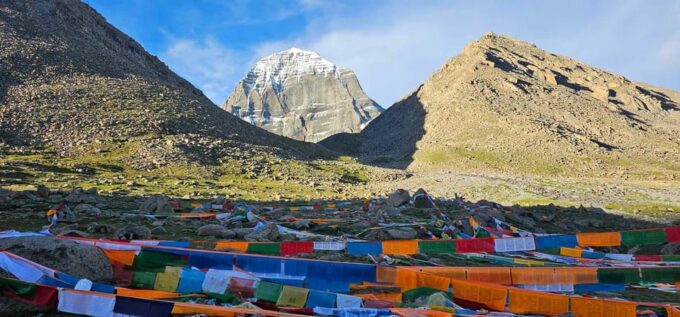
Traversing the hallowed grounds of Mount Kailash instills a profound sense of reverence and tranquility. Pilgrims are often left awestruck by the immense power and beauty of this sacred site, leaving them with indelible memories.
The journey offers a cornucopia of unforgettable experiences:
-
Witnessing the sun’s golden rays illuminate the snow-capped peaks of Mount Kailash at dawn.
-
Engaging in the ancient ritual of circumambulation, connecting with the spiritual essence of the mountain.
-
Marveling at the serene waters of Lake Manasarovar, a mirror reflecting the grandeur of the surrounding landscape.
-
Conquering the challenging Dolma-La Pass, a testament to the pilgrim’s physical and mental fortitude.
Frequently Asked Questions

What Is the Dress Code for the Pilgrimage?
The pilgrimage requires comfortable clothing and shoes, as the terrain is challenging. Travelers should avoid wearing military-style clothing. Layers and protective gear like gloves and face masks are recommended due to the high altitude and weather conditions.
Can I Bring Personal Medical Supplies?
Yes, personal medical supplies like medications, bandages, and thermometers are allowed. Travelers should bring a well-stocked first aid kit to address any health issues that may arise during the pilgrimage.
Are There Any Cultural Traditions to Observe?
Travelers should respect local cultural traditions during the pilgrimage, such as circumambulating Mount Kailash clockwise, avoiding pointing feet towards the mountain, and dressing conservatively. Following these customs shows reverence for the sacred site.
How Can I Acclimatize to the High Altitude?
To acclimatize to high altitude, gradually increase activity and hydrate well. Avoid rushing, get plenty of rest, and eat high-calorie meals. Take it slow and listen to your body to prevent altitude sickness.
What Is the Best Time of Year to Visit Mount Kailash?
The best time to visit Mount Kailash is between May and October when the weather’s mild, skies are clear, and the pilgrimage routes are open. Avoid the winter months as the high altitude and harsh conditions make the journey challenging.
The Sum Up
The Mount Kailash pilgrimage is a transformative journey that challenges participants both physically and spiritually. Trekking through the awe-inspiring Himalayan landscape, pilgrims connect with the serene beauty of Lake Manasarovar and the sacred Mount Kailash. Though demanding, this pilgrimage offers a profound opportunity for personal growth, leaving lasting memories of reverence and tranquility.
You can check availability for your dates here: